Explore this article:
Chaga ⋅ Cordyceps ⋅ Lion’s Mane ⋅ Maitake ⋅ Reishi ⋅ Turkey Tail
A Buyer’s Guide to Medicinal Mushrooms ⋅ Recipe: Medicinal Mushroom Broth
Humans have used mushrooms as medicine for thousands of years. Fifth-century Chinese alchemist Tao Hongjing extolled their healing virtues. Hippocrates noted the anti-inflammatory prowess of certain fungi. And Ötzi the Iceman, whose 5,000-year-old corpse was found preserved in ice atop the mountains between Austria and Italy in 1991, was carrying mushrooms with medicinal properties.
Hundreds of published studies now support what our ancestors surmised: Fungi are full of substances that heal the body. They can help fight cancer, regulate insulin, soothe stress, and much more.
This may explain why medicinal mushroom supplements are sprouting up everywhere — often appealingly combined with chocolate and coffee. “Medicinal mushrooms are some of the most valuable and potent therapeutic agents from the natural world,” says integrative cancer-care expert Nalini Chilkov, LAc, OMD.
To be clear, the strictly culinary mushroom is no slouch. These tasty fungi deliver vitamins, minerals, antioxidants, fiber, and more. What sets medicinal mushrooms (some of which are also culinary) apart is their enhanced ability to support and modulate our immune systems — in part by nourishing the gut microbiome.
“Mushrooms are the world’s most potent prebiotic, capable of diversifying and promoting the growth of the most beneficial species of gut bacteria,” says mycologist Christopher Hobbs, PhD, author of Medicinal Mushrooms: The Essential Guide. And when the gut microbiome is thriving, the body is well positioned to defend against infections, type 2 diabetes, and many types of cancer.
Mushrooms also support immunity with their abundance of beta-glucans. These glucose molecules wake up the body’s innate immune cells, including macrophages, dendritic cells, and natural killer cells. Reinvigorated immune cells are better able to find and destroy pathogens.
Part of the beauty of medicinal mushrooms is how they straddle the worlds of wellness and functional medicine, says Mason Bresett, ND, chief science advisor for Real Mushrooms, an organic-mushroom-extract company. “Mushrooms are used in adjunct oncology treatment plans, and the average person can drink mushroom coffee to boost their immune system and help relieve stress.”
These are six of the most well-studied medicinal mushrooms, along with some easy ways to include them in your daily routine.
Chaga (Inonotus obliquus)
Primary benefits: Fights cancer and helps heal the gut.
In Russia’s Kama River basin, chaga has long been used as medicine, and the name “chaga” is derived from one of their words for “mushroom.” Yet chaga is technically not a mushroom — it’s a conk, a charcoal-like formation that grows on wounded trees hosting the fungus Inonotus obliquus. And it’s most definitely medicinal, containing more than 200 different bioactive molecules.
The first recorded use of chaga to fight cancer was in the 12th century, and contemporary research may now explain why it works. Chaga grows primarily on birch trees, whose bark contains high levels of betulinic acid, a substance that prompts cancer cells to self-destruct while leaving healthy cells untouched. Researchers are now investigating betulinic acid as a treatment for a dozen different types of cancer, including lung, pancreatic, and colon.
Traditionally, chaga has been used to treat stubborn skin conditions and heal stomach ulcerations. “Chaga has an affinity for the gut,” says Bresett, who prescribes chaga for digestive support and to help patients with gut-related skin conditions.
How to use chaga:
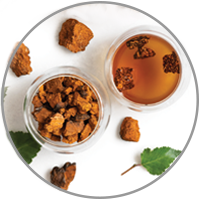 Grind chaga to a fine powder (or purchase it powdered) and stir it into a warm beverage. Hobbs recommends pouring 2 cups of boiled water over 1 heaping tablespoon of powdered chaga and steeping the mixture for an hour. (Consuming the chaga residue offers additional health benefits, but if it bothers you, strain the mixture like tea.) Drink one 8-ounce mug of chaga brew a day for preventive purposes; increase that to two or three cups for a therapeutic dose.
Grind chaga to a fine powder (or purchase it powdered) and stir it into a warm beverage. Hobbs recommends pouring 2 cups of boiled water over 1 heaping tablespoon of powdered chaga and steeping the mixture for an hour. (Consuming the chaga residue offers additional health benefits, but if it bothers you, strain the mixture like tea.) Drink one 8-ounce mug of chaga brew a day for preventive purposes; increase that to two or three cups for a therapeutic dose.
Bresett likes to mix half a teaspoon of finely ground chaga extract with cacao powder and top it off with a little maple syrup to make hot chocolate. “Chaga and chocolate taste really good together, so it’s a great way to soothe the digestive system as well as get some immune support.”
Cordyceps (Ophiocordyceps sinensis, Cordyceps militaris)
Primary benefits: Boosts strength and stamina.
Found mainly on the Tibetan plateau, Ophiocordyceps sinensis is known as caterpillar fungus, thanks to its unusual proclivity for feeding and growing on caterpillars. This species and other, similar species are considered to be an overall health tonic in Traditional Chinese Medicine and especially beneficial to the kidneys and lungs.
In recent decades, cordyceps has also gained traction among athletes because of its relationship to adenosine triphosphate, the primary fuel source in cells. While studies of cordyceps use by athletes are sparse, some research suggests supplementing with cordyceps may hone the body’s metabolic capacities, lower levels of exercise-induced oxidative stress, and delay exercise fatigue.
Bresett often recommends cordyceps to people who are struggling to regain strength after a chronic illness. He also sees a benefit for athletes seeking greater energy and endurance.
Wild cordyceps are so popular in Asia that overharvesting has led to scarcity. “In dried weight, wild cordyceps are more valuable than gold,” says Hobbs.
An alternative species of cordyceps, C. militaris, can grow on a grain substrate and produces similar benefits minus the astronomical price tag. This is typically what you’d find in the U.S. market.
How to use cordyceps:
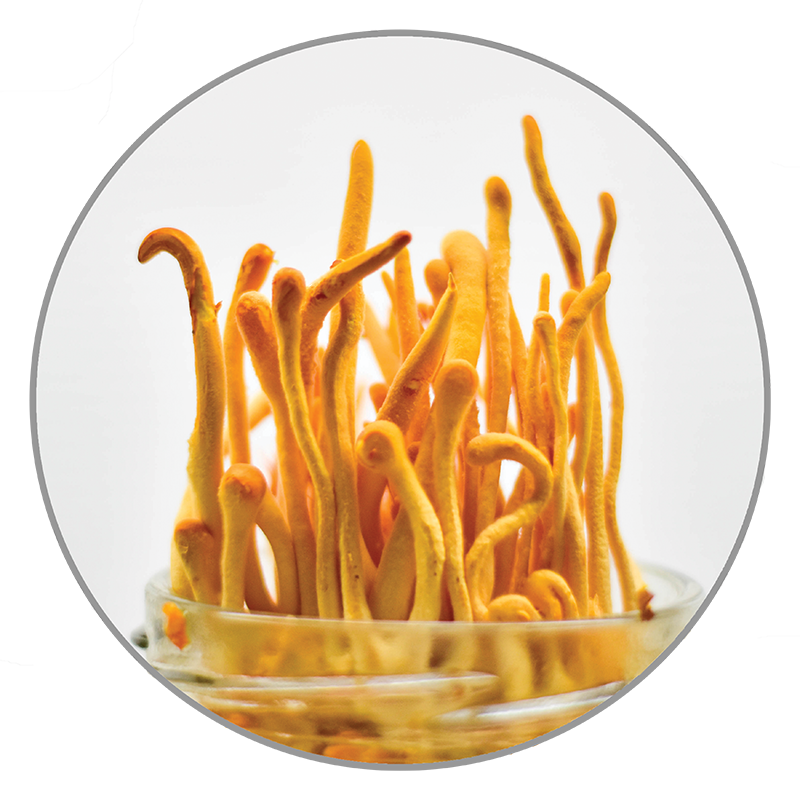
Supplements claiming to be the true wild Ophiocordyceps sinensis (or the out-of-date name Cordyceps sinensis) should be viewed skeptically, advises Hobbs, because wild cordyceps are extremely expensive. Instead, look for products made from C. militaris.
To increase stamina and support lung health, take ½ to 1 teaspoon cordyceps powder in a little water or tea once or twice a day. You can also add it to smoothies (try this Banana Berry Preworkout Smoothie With Cordyceps to start.)
Lion’s Mane (Hericium erinaceus)
Primary benefits: Supports brain and nerve health.
Also nicknamed the smart mushroom, lion’s mane is chock-full of brain-supportive compounds. Among them are hericenones and erinacines, which may be useful in the treatment of mood disorders. And erinacines appear beneficial in slowing the impact of aging on the brain.
This Dr. Seussian–shaped shroom also has a growing reputation as a nerve tonic. Studies suggest it has neuroprotective effects, and some of its compounds can cross the blood–brain barrier and jump-start nerve growth.
Lion’s mane is also believed to be an adaptogen, meaning it can buffer the physiological impact of stress on the body (for more on adaptogens, see “7 Adaptogens for Health.”) Bresett uses lion’s mane to treat age-related declines in memory and executive functioning and as an overall tonic for the digestive system.
How to use lion’s mane:
Hobbs likes to prepare fresh lion’s mane by slicing it into ½-inch slabs and sautéing it for three to four minutes with olive oil, butter, and tamari — akin to a mushroom steak.
If using dried, take 1 gram (roughly ½ teaspoon) two or three times daily. For a therapeutic dose, take up to 5 grams a day (about 1 level teaspoon twice daily).

Maitake (Grifola frondosa)
Primary benefits: Supports immunity, fights cancer, and regulates blood sugar.
In Japanese, “maitake” means “dancing mushroom.” Some say this is because people danced with joy when they found it. In North America, maitake is also known as hen of the woods.
Like lion’s mane, maitake is both medicinal and culinary. While it’s not uncommon to find maitake growing in the wild, it is one of the most frequently farmed fungi, much like button, shiitake, and oyster mushrooms.
Maitake’s medicinal heft comes from the volume and diversity of its beta-glucans. These include a subset with promising antitumor effects, as well as another subset shown to enhance insulin resistance.
Most research has been done in test tubes or on animals, so the medicinal effects of maitake are still not as well understood as those of other medicinal mushrooms. But preliminary findings point to maitake as a powerful immune and insulin regulator.
Bresett uses maitake for chronic viral infections, like herpes, that tax the immune system, as well as complementary support for metabolic health.
How to use maitake:
As a supplement, experts generally recommend 1 to 6 grams of dried powder daily, or two to three dropperfuls of tincture once or twice a day.
Fresh maitake plays well in soups and stir-fries. Bresett likes it in pasta dishes as well as on its own, sautéed with butter and finished with a dash of vinegar.

Reishi (Ganoderma lucidum)
Primary benefits: Supports immune function and heart health; helps with stress management.
Reishi is sometimes called the queen of mushrooms because of its broad spectrum of health benefits. Evidence suggests it may boost immunity, mood, heart health, and overall energy.
These mushrooms offer abundant triterpenes, substances with anti-inflammatory, antiviral, and antimicrobial effects. Chilkov recommends reishi mushrooms to her cancer patients more than any other medicinal mushroom.
Reishi mushrooms are also adaptogens, which means they help support the body’s ability to manage stress. “Reishi is a calming mushroom compared to others,” says Bresett. “It can soothe the central nervous system, so if you aren’t sleeping well, reishi is a great choice due to its adaptogenic effect.”
How to use reishi:
Reishi mushrooms are typically consumed as a powdered supplement or tincture. You can brew them into a tea or add them to soup broth. (Try reishi in this overnight oats recipe.)
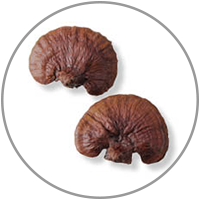 If you’re taking a powdered supplement, aim for 2 to 3 grams (about 1 teaspoon) per day for maintenance, or 2 teaspoons per day for therapeutic purposes. If using a tincture, look for “double-extracted” on the label: This means it’s been processed with both water and alcohol. Alcohol activates the triterpenes, while hot water enlivens the beta-glucans. For dosage, follow the instructions on the bottle.
If you’re taking a powdered supplement, aim for 2 to 3 grams (about 1 teaspoon) per day for maintenance, or 2 teaspoons per day for therapeutic purposes. If using a tincture, look for “double-extracted” on the label: This means it’s been processed with both water and alcohol. Alcohol activates the triterpenes, while hot water enlivens the beta-glucans. For dosage, follow the instructions on the bottle.
Turkey Tail (Trametes versicolor)
Primary benefits: Super-charges the immune system to fight cancer, viruses, and other pathogens.
An unassuming mushroom that grows on dead logs and tree trunks worldwide, turkey tail looks almost like the bird’s plumage; it has fan-like growths with concentric brown and gray stripes. It may also be the best-studied and most powerful medicinal mushroom.
Extraordinarily rich in beta-glucans, turkey tail also supports the immune system by accelerating the body’s production of cytokines and natural killer cells. In Japan, a product made from turkey tail (called polysaccharide K, or PSK for short) has been used alongside chemotherapy to treat cancer for decades. PSK is now covered by Japan’s national health insurance and has been estimated to account for 25 percent of the total cost of treating cancer in that country.
Integrative nutritionist Janet Zarowitz, MS, RD, CDN, uses turkey tail mushrooms for her patients during and after cancer treatment.
How to use turkey’s tail:
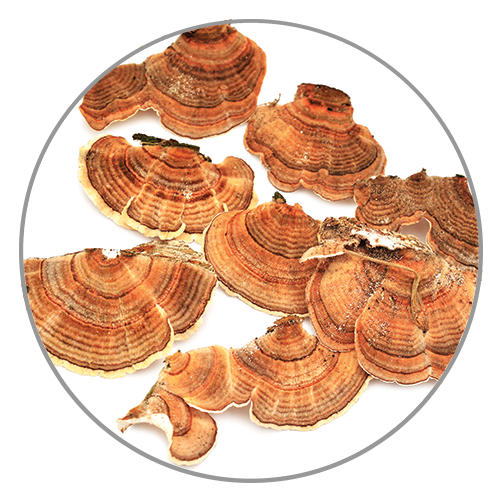
Turkey tail’s high beta-glucan content makes it extremely dense and chewy, so it is not a culinary mushroom. Hobbs recommends 1 to 3 grams of heat-treated and powdered turkey tail daily for general health support. A therapeutic dose is 5 to 6 grams a day.
A Buyer’s Guide to Mushroom Supplements
The way mushrooms are cultivated affects their quality, so finding good mushroom supplements can be a challenge. Keep these five things in mind when you’re shopping.
1) Know the parts of a mushroom.
What we often think of as a mushroom is actually the fruiting body of the fungus, which grows from the mycelium, the rootlike system that develops within wood, soil, or other materials. Picture the mycelium as a giant, far-reaching underground tree and mushrooms as the fruit. Fruiting bodies and mycelium both offer plenty of health benefits, says mycologist Christopher Hobbs — but in some cases, the fruiting body will contain less starch and provide more medicinal benefits.
2) Check how it’s grown.
In the wild, mushrooms grow on a variety of materials, including wood, duff, and soil. Yet most large-scale commercial growers grow mushrooms on sterile grain, which is cheaper and faster. If the harvest happens before fruiting bodies appear, the grain becomes a significant part of the product.
“You’ve got to take the extra time to ensure the final product is majority mushroom, not grain,” Hobbs says. (He recommends the brands Real Mushrooms and Mushroom Harvest.)
Others believe grain doesn’t belong in mushroom supplements, period, and that only mushrooms cultivated on wood are worthwhile. “People who are investing their money in supplements want mushrooms, not grain,” says integrative cancer-care expert Nalini Chilkov, LAc, OMD. She recommends Mushroom Science and Natura Health — specifically, a Natura Health product called Mushroom Synergy.
3) Look for “extracted” or “heat treated.”
A mushroom’s medicinal compounds must be extracted in some way before they become bioavailable. For instance, heat can release beta-glucans — so a quick sauté of that lion’s mane is the way to go.
Other mushrooms, like reishi, contain alcohol-soluble compounds, such as phenolics and terpenes: These require an alcohol-based extraction process. If a mushroom product has been extracted with alcohol, it will be noted on the ingredient panel.
4) Buy organic.
Mushrooms have permeable flesh, similar to strawberries. This makes them sensitive to pesticides, herbicides, heavy metals, and other contaminants.
“As nature’s decomposers, mushrooms will bioaccumulate chemicals in their environment,” says Shawn Dunn, cofounder of Shroomworks, a California-based mushroom company. Look for organic and third-party-tested products. These labels mean the supplement went through an additional layer of testing for purity and accuracy.
5) Go local.
Countries have different production and labeling standards, so mushroom supplements made overseas may be more likely to be contaminated with chemicals or heavy metals. To increase the odds that you’re getting a mushroom supplement that’s accurately labeled, safe, and effective, Hobbs recommends choosing products made from mushrooms grown in the United States.
Medicinal Mushroom Broth
This savory, soothing broth offers a great opportunity to sample the benefits of a few medicinal mushrooms in one place. It comes from Madeline Appel at Fare and Flora, a blog where Appel documents her experiments using nutrition to manage her autoimmune psoriasis. She describes this broth as an inflammation soother and notes the adaptogenic effect of the mushrooms also help to calm her anxiety symptoms. She recommends drinking this broth hot.
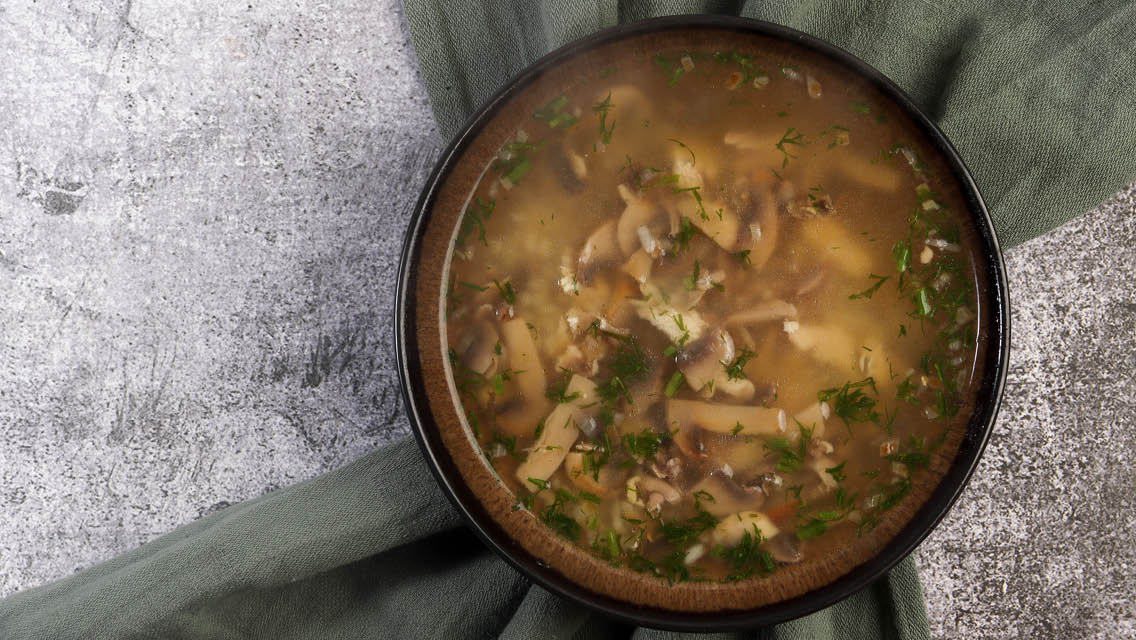
- 1 gallon water
- 8 grams dried reishi mushrooms
- 8 grams dried turkey tail mushrooms
- 8 grams dried maitake mushrooms
- 8 grams dried shiitake mushrooms
- 5–8 grams dried calendula flowers
- 1 onion, cut in half
- 2 stalks celery, cut in half
- 2 large carrots, cut in half
- 2 cloves of garlic, smashed
- Several large chunks of ginger
- Fresh or dried turmeric, if desired
- Other vegetables as desired (leeks, onions, etc.)
- Herbs as desired (fresh thyme, cilantro stems, etc.)
- 2–3 tsp. salt, pepper to taste
- Miso paste, to add after cooking
- Place all ingredients except miso in a large pot and bring to a boil. Reduce heat to low, cover with a lid, and simmer for 4 hours.
- Cool, then strain through a fine mesh sieve into glass containers. Store in the fridge for up to one week.
- To serve, heat through; remove from heat, then stir in 1–2 teaspoons of white miso paste. Drink from a mug.
- Add a splash of soy sauce, sriracha, some dried wood ear mushrooms, soft tofu, and your favorite dried seaweed for a delicious and nourishing miso soup.
- Add this broth to soups or cook your grains and legumes in it.


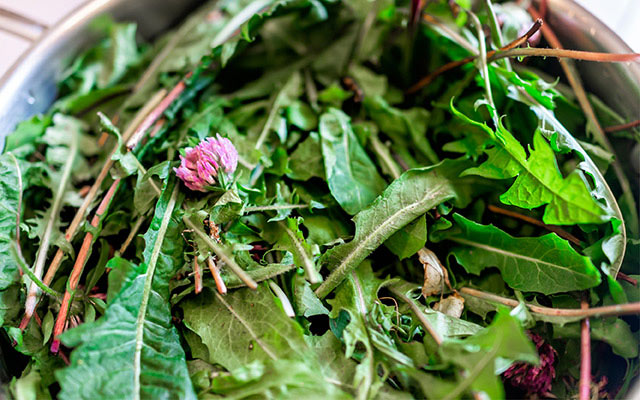
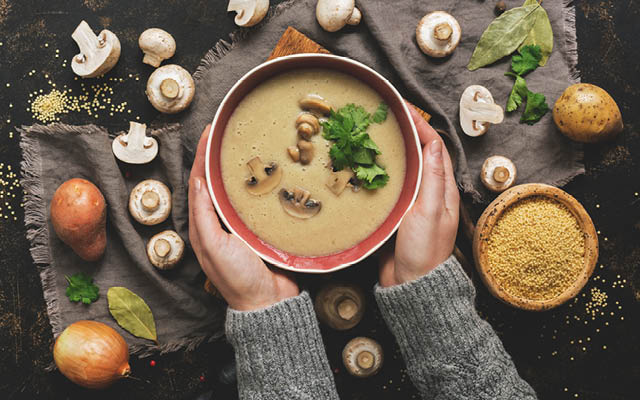
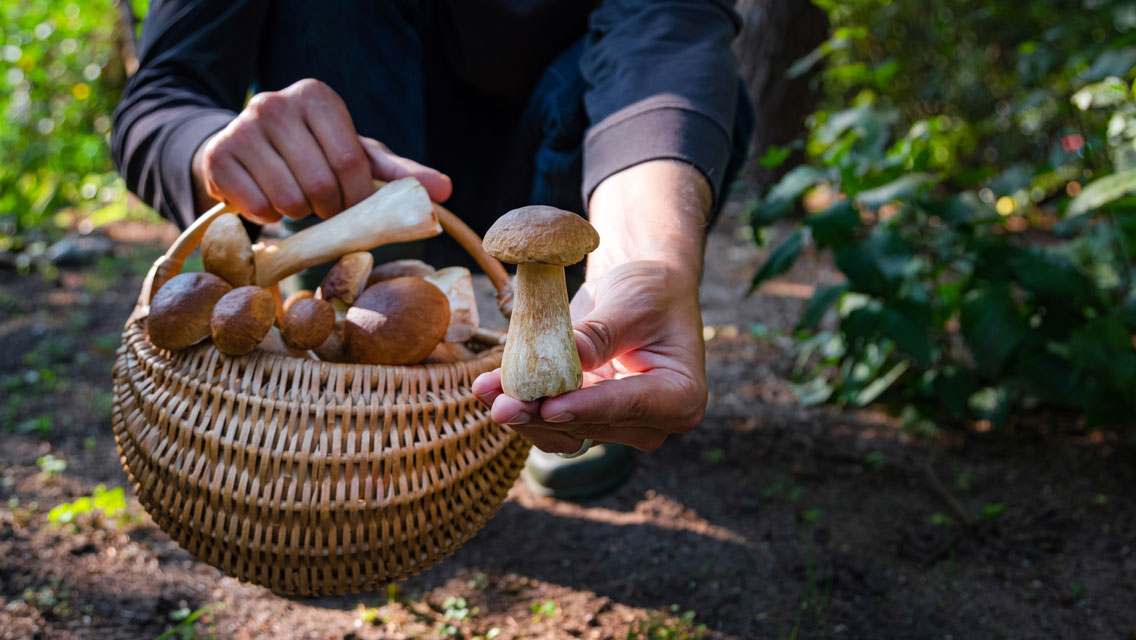
This Post Has 0 Comments